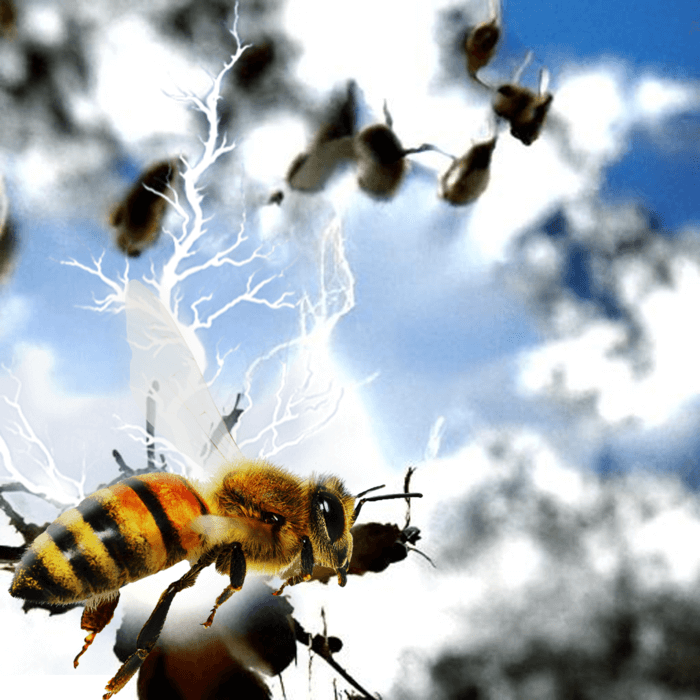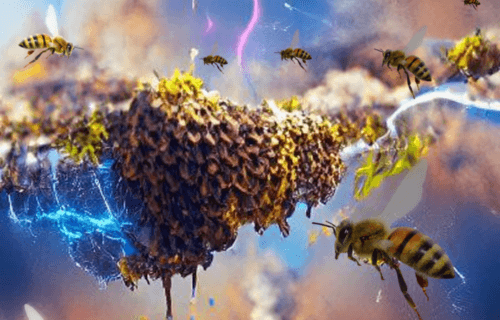BRISTOL, United Kingdom — They may be small, but a “shocking” new study finds insects can produce as much atmospheric electricity as a thunderstorm.
Researchers from the University of Bristol say the electricity shapes weather events, helps insects find food, and even lifts spiders up in the air to migrate over large distances.
Scientists add that the discovery could lead to better pest control measures. Humans are only aware of the phenomenon during lightning flashes, when the sky makes a circuit with Earth. Creepy crawlers have a more nuanced sense and can harness it to take flight, the team reveals.
“We always looked at how physics influenced biology, but at some point, we realized that biology might also be influencing physics,” says first author Ellard Hunting, a biologist at the University of Bristol, in a media release. “We’re interested in how different organisms use the static electric fields that are virtually everywhere in the environment.”
The team measured electrical fields near honeybees. The pollinators carry an innate electric charge, like most living creatures. The analysis showed hive swarms change them by 100 to 1,000 volts per meter — increasing force normally experienced at ground level. Dr. Hunting and colleagues then developed a model to predict the influence of other species of insects.
“How insect swarms influence atmospheric electricity depends on their density and size,” says co-author and biologist Liam O’Reilly. “We also calculated the influence of locusts on atmospheric electricity, as locusts swarm on biblical scales, sizing 460 square miles with 80 million locusts in less than a square mile; their influence is likely much greater than honeybees.”

How do different insects use electricity?
Large grasshoppers – found on every continent except Antarctica – destroy crops and livelihoods. Under high voltage, electric fields induce various electrostatic phenomena, some of which could help save farms.
“We only recently discovered that biology and static electric fields are intimately linked and that there are many unsuspected links that can exist over different spatial scales, ranging from microbes in the soil and plant-pollinator interactions to insect swarms and perhaps the global electric circuit,” adds Ellard.
Scientists say eco-friendly, cost-efficient, and sustainable alternatives to synthetic insecticides are desperately needed.
“Interdisciplinarity is valuable here—electric charge can seem like it lives solely in physics, but it is important to know how aware the whole natural world is of electricity in the atmosphere,” says co-author Giles Harrison, an atmospheric physicist from the University of Reading.
The study, published in the journal iScience, follows previous research by the same team which shed light on “ballooning” — when a spider holds on to a strand of thread that carries them aloft. That feat was always assumed to be a matter of riding air currents by some unknown mechanism.
Charles Darwin was puzzled by “aeronaut spiders” reaching the Beagle on gossamer threads 60 miles off South America. In experiments, spiders took off in a sealed chamber box with no air when an electric field was present.
Repulsion on the charged thread provided the necessary lift. When the electric field was turned off, the spiders came back down. Spiders have tiny hairs called trichobothria that sense electric fields, like human hairs rising in response to static electricity. When a spider senses the field is strong enough, they will climb to a high twig or blade of grass, spin a silken line, and take off.
South West News Service writer Mark Waghorn contributed to this report.

